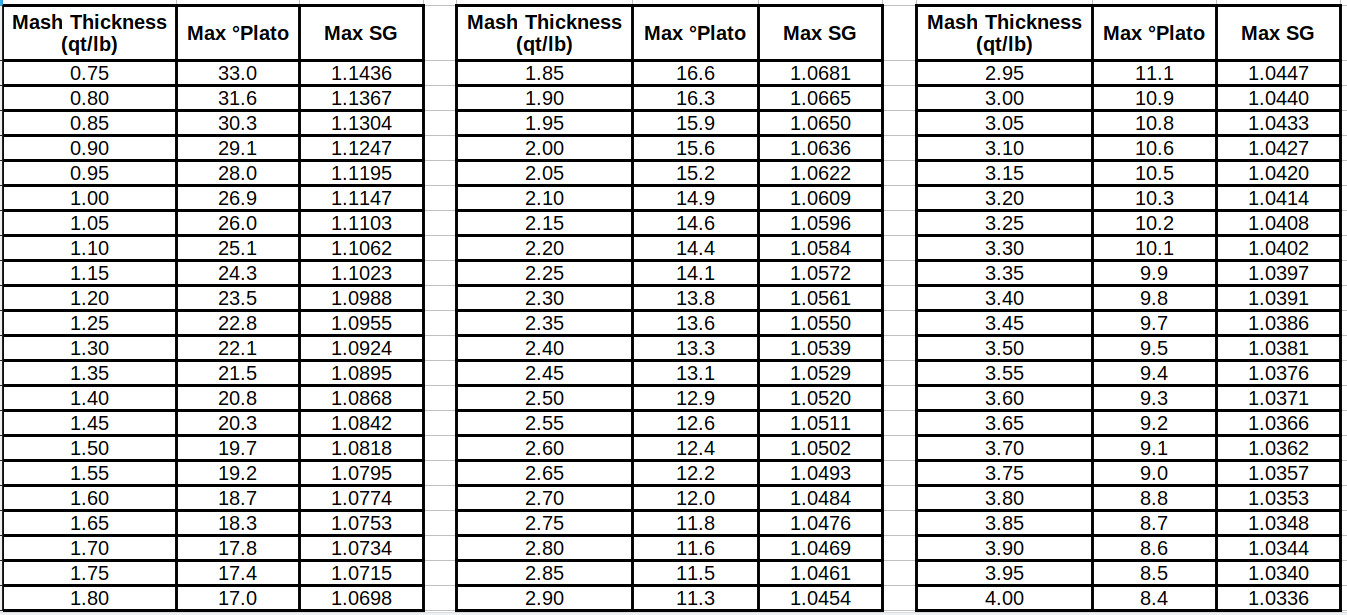carrsgarage
Well-Known Member
- Joined
- Apr 19, 2018
- Messages
- 98
- Reaction score
- 11
It's been about two years since I brewed last and I finally got my 3V HERMS set back up after a move.
I brewed three weeks ago and it went very poorly. I overshot my mash temperature by 20⁰, had a boilover, and ended up with a really sad end product after a week's worth of fermentation.
The O.G. should have been 1.066, but I ended up with 1.053. F.G. ended up being 1.021. it's the first batch of beer that I've ever dumped instead of kegged.
I brewed the same recipe again this morning, figuring I had all the bugs worked out. The brew process went absolutely wonderfully, compared to the last attempt. However, I still missed my numbers. This time around, the O.G. is 1.050.
Since I overshot the mash temp so badly the last time around, I started with a cooler strike water - 168⁰ instead of 178⁰ and had to bring the mash temp up from 155⁰ to 158⁰ after under-letting the grist, which took about 15 minutes. I then mashed for 45 minutes exactly at 158⁰. I checked for starch conversion using iodine and I was good to go.
I fly sparged using a Blichmann Auto-Sparge which may not have been set to exactly the right height, but worked fine - no stuck sparge or anything like that.
I'm really not sure how I missed my O.G. this time around. I have never been off by this much before.
Any thoughts?
I brewed three weeks ago and it went very poorly. I overshot my mash temperature by 20⁰, had a boilover, and ended up with a really sad end product after a week's worth of fermentation.
The O.G. should have been 1.066, but I ended up with 1.053. F.G. ended up being 1.021. it's the first batch of beer that I've ever dumped instead of kegged.
I brewed the same recipe again this morning, figuring I had all the bugs worked out. The brew process went absolutely wonderfully, compared to the last attempt. However, I still missed my numbers. This time around, the O.G. is 1.050.
Since I overshot the mash temp so badly the last time around, I started with a cooler strike water - 168⁰ instead of 178⁰ and had to bring the mash temp up from 155⁰ to 158⁰ after under-letting the grist, which took about 15 minutes. I then mashed for 45 minutes exactly at 158⁰. I checked for starch conversion using iodine and I was good to go.
I fly sparged using a Blichmann Auto-Sparge which may not have been set to exactly the right height, but worked fine - no stuck sparge or anything like that.
I'm really not sure how I missed my O.G. this time around. I have never been off by this much before.
Any thoughts?





















![Craft A Brew - Safale S-04 Dry Yeast - Fermentis - English Ale Dry Yeast - For English and American Ales and Hard Apple Ciders - Ingredients for Home Brewing - Beer Making Supplies - [1 Pack]](https://m.media-amazon.com/images/I/41fVGNh6JfL._SL500_.jpg)





































